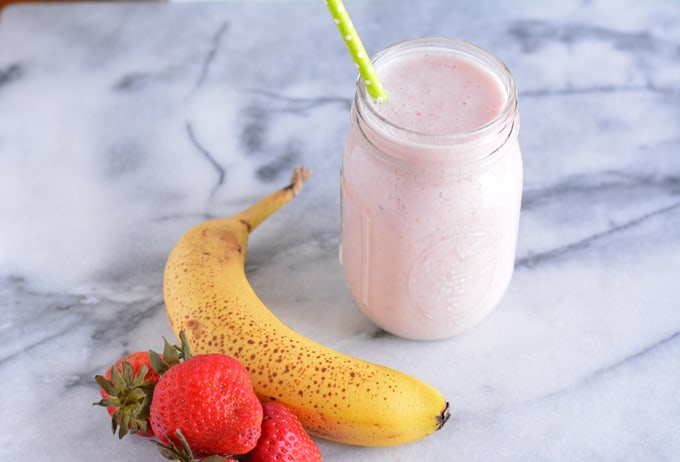Smoothie Nutrients Are Smoothies Good for You?

What should you put in a smoothie to ensure optimum nutrition? In this article, we’ll discuss the benefits of Omega-3 fatty acids, calcium, and protein. Adding a few of these to your smoothie is an excellent way to get a full day’s worth of essential nutrients in a single drink. While you’re at it, consider adding some fruit too. These fruits and vegetables are rich in fiber and antioxidants.
Protein
If you are looking for a way to get more protein in your diet, you may be wondering how to incorporate it in your smoothie recipes. While protein is crucial for maintaining your muscles and body tissues, it can also serve as energy when other forms of fuel are insufficient. In addition, it improves your overall health and helps prevent disease. Without protein, your body can break down your old tissues and build new ones instead. Here are three tips to incorporate protein into your smoothie recipes.
Whole milk is a great source of protein, containing around nine grams per cup. Coconut and almond milk contain less than one gram of protein per cup. This makes cow’s milk an excellent choice for smoothies. Cottage cheese also contains protein and adds creaminess. It is easy to find milk that contains high protein, but not one that’s high in sugar! Try switching up your milk source to boost the protein in your smoothie recipes.
Fiber
A good way to boost your fiber content in smoothies is to add fruit or vegetables. The addition of berries is a popular smoothie addition. They offer a rich source of fiber, and act as a natural sweetener, too. By adding just one cup of berries to your smoothie, you can easily increase its fiber content by 4 grams. Additionally, cocoa powder adds another layer of nutrition to your juice. A cup of cocoa powder contains 7 grams of dietary fiber.
For those of us with diabetes and pre-diabetes, we know that fruits and vegetable juices cause blood glucose levels to rise. Fiber helps prevent this from happening by slowing down the rate at which the body releases glucose into the bloodstream. Because fruits and vegetables contain natural sugars, these products spike blood glucose levels, which forces the pancreas to release insulin to push the glucose into the cells. But, this overcompensation can result in mood swings, and eventually insulin resistance.
Omega-3 fatty acids
Adding a scoop of omega-3 fatty acids to your smoothie can be a great way to get these essential fatty acids into your diet. Fish and walnuts are great sources of omega-3 fatty acids, but they aren’t the only foods with omega-3s. You can also get them from other sources, including plant-based oils and soy products. These fats are vital for heart health, joint comfort, and even a good mood.
Try adding ground flaxseed to your smoothie. Flaxseed contains omega-3 fatty acids that promote heart health and regulate blood clotting. They are also high in fiber and contain lignans, which may help protect against certain types of cancer. Almond butter is another healthy option. It has many health benefits, including a high concentration of vitamin E and magnesium. Chia seeds can also be a great addition to your smoothie, because they’re high in omega-3s.
Calcium
If you’re concerned about your calcium intake, a great way to boost your daily dose is to incorporate more dairy foods into your daily routine. Dairy products, such as milk and yoghurt, are rich in calcium. These foods are essential for building strong bones, and calcium can also help prevent osteoporosis (weak bones). Additionally, calcium helps keep muscles, nerves, and the heart healthy, and may even regulate your blood pressure.
Aside from dairy products, you can also incorporate calcium-rich foods into your diet by adding almond butter or kale to smoothies. These plant-based foods can also be added to stir-fries, curries, and soups. Calcium-rich foods are great sources of calcium and can be found in numerous fruits and vegetables, including almond butter and papaya. If you’d like to add more calcium to your smoothies, try mixing them with peanut butter for a more satisfying snack!
Vitamins
Fruit Smoothies contain a wealth of nutrients. For example, one cup of a Fruit Smoothie contains 190 mg of Vitamin C, and the other ingredients include calcium and iron. Vitamins are important for a variety of health benefits. And, if you’re trying to lose weight, your smoothie is a great way to get more of them! Listed below are some other ways to get more of these vitamins into your smoothie.
Fruits and vegetables are the best sources of vitamins and minerals, and they contain many heart-healthy antioxidants. According to the World Health Organization, adults should consume a variety of fruits and vegetables each day. Most people fall short of this recommendation, and smoothies are an easy way to get a few more servings per day. Fruit and vegetables can also be a good way to add flavor to your smoothie without adding too much sugar.
Flaxseed
Whether you’re looking for a quick, nutritious breakfast, or you’re looking to incorporate some plant-based omega-3 fatty acids into your daily diet, a flaxseed smoothie is an excellent option. Flaxseed contains ALA, a plant-based omega-3 fatty acid, which has been linked to reduced risk of cardiovascular disease, cancer, and inflammation. Furthermore, flaxseed is rich in lignans, which are believed to lower the risk of cancer and other inflammatory diseases.
Another benefit of flaxseed is its ability to lower blood pressure, which is associated with a lower risk of heart disease and stroke. Researchers discovered that flaxseeds can help control blood sugar levels and may even be beneficial for people with type 2 diabetes and insulin resistance. The refreshing smoothie also helps boost hydration. Flaxseed smoothies are a great way to sneak in extra nutrients without a big mess.










